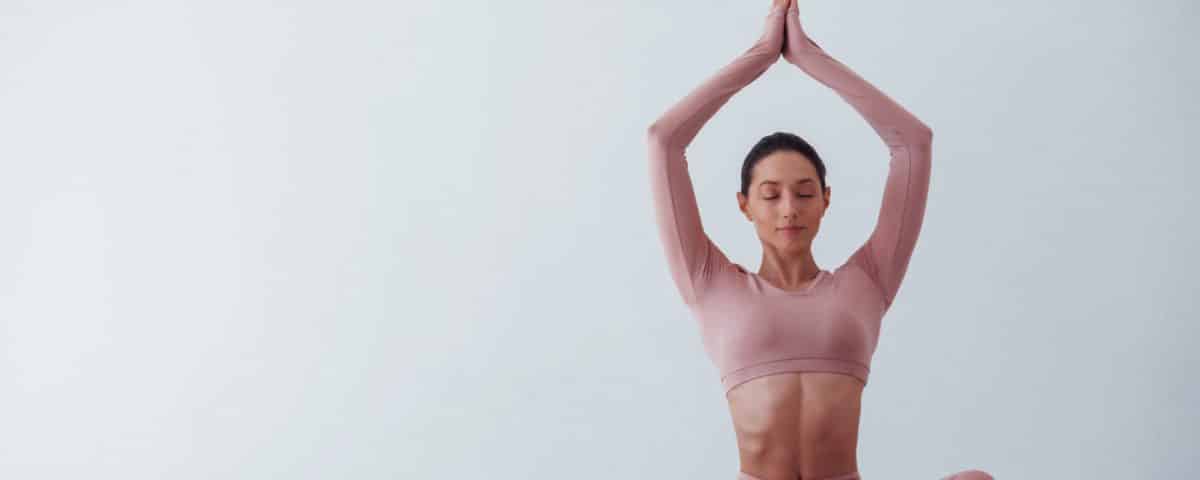
Improve Your Hearing Health
August 15, 2022
Holiday Tips for those with Hearing Loss
November 21, 2022The Positive Effects of Yoga on Hearing Loss
The art of yoga has been practiced for centuries and has shown a number of health benefits, both physical and mental. One of the more recent findings lends reason to the idea that yoga can also prove beneficial to strengthening our hearing. It has shown hearing improvements in people with tinnitus and hearing loss.
What is Yoga?
Yoga is an ancient practice that incorporates gentle exercise, breath control, and meditation. Historically, it has been known to benefit those who practice it – be they a newcomer or a long time practitioner. Whether you’re a beginner just starting to practice holding poses and asanas, or an experienced meditator seeking deeper insights through kundalini, yoga is well worth the challenge!
Yoga has withstood the test of time for over 5,000 years. It was designed as a path to spiritual enlightenment, but in modern times, the physical aspect of the practice is used as a form of exercise and stress management.
Yoga’s Positive Effects on Individuals with Hearing Loss
- Increases Blood Flow to the Ears
- Helps Relax Muscle Tissue
- Releases feel-good hormones
Here are some Yoga Poses we found to Help you Improve Hearing Loss:

Bhramari Pranayama
Breathing exercises are known as Pranayama. There are various Pranayamas one can try.
For better hearing, yoga instructors recommend the Brahmari Pranayama. Commonly known as the Bee Breath, this yoga pose works mainly for the ear, nose and throat.
During this Pranayama, while exhaling there is a humming sound that tries to generate an echo in the ears. For the treatment of tinnitus and sensorineural hearing loss, the same effect stimulates hair cells through the resonation of the skull. This stimulation converts sound signals into electrical impulses and improves hearing. Not only hearing, but this also unclogs the sinuses and blocked ears.
Steps to perform Brahmari Pranayama:
- Start with sitting in Padmasana pose
- Close your eyes and ears by turning the earlobes using the index finger
- While keeping the mouth close, inhale deeply
- Let out air through the nose while making a humming sound
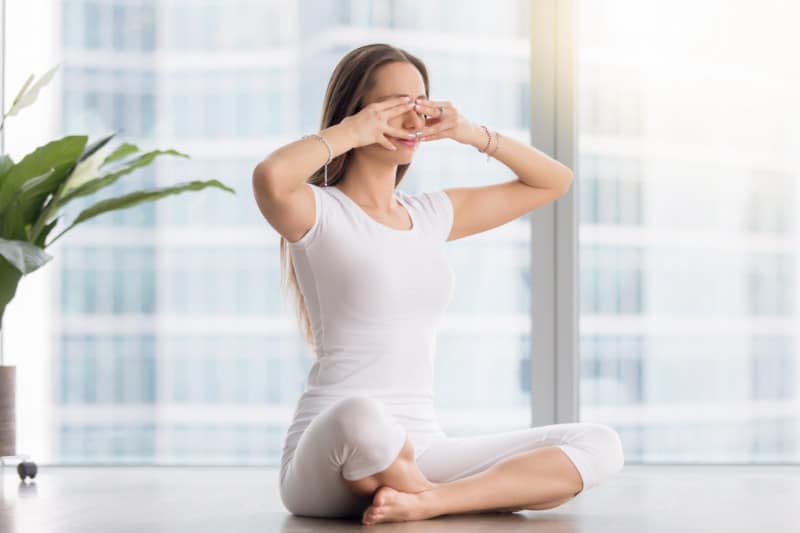

Shunya Mudra
Along with asanas, mudras- hand gestures, also play a pivotal role in the holistic healing of hearing loss. Also known as Akash Mudra, it mainly deals with space within the body.
Mudras define the 5 fingers as the representation of 5 elements of the universe- Fire, Air, Space, Earth, and Water. According to experts, when a particular element comes in contact with the fire element, a charge is generated that nullifies that particular element.
In Shunya Mudra, one has to bring the third finger, representing Space with the thumb. The thumb represents the fire element. The yoga pose can treat various hearing problems including ringing in the ears, vertigo, and dizziness, etc.
Steps to perform Shunya Mudra:
- Start with sitting in the Padmasana pose comfortably
- Bring the thumb over the middle finger by bending it
- Bend the middle finger till it touches the base of the thumb
- Exert a slight pressure to keep the finger in place


Greeva Chalan
With growing age, the blood supply to the brain and labyrinth decreases leading to cervical spondylosis. This results in a gradual decrease in hearing. Fortunately, regular cervical and shoulder exercises can relieve tension.
Here is a set of three exercises that can help:
- Neck flexion-extension exercise- Begin with tucking the chin towards the chest by gently bending the head downward. After this, gently bend the head upward as maximum as possible.
- Lateral flexion exercise- In this exercise, one has to touch the ear with the shoulder- right ear with the right shoulder and left ear to the left one. This has to be done without turning or rotating the head.
- Head rotation exercise- Rotate the head first to the right then back to the normal position and then left.


Kumbhak
Kumbhak is mainly a respiratory exercise. In this yoga asana, one has to exhale air from the lungs for a long duration with maximum capacity. Therefore, this increases carbon dioxide in the blood thereby, leading to the stimulation and regeneration of the hearing area.
Steps to perform Kumbhak:
- One has to start by sitting in a comfortable meditating pose
- Breathe naturally through both the nostrils
- Take a deep breath and tuck the chin into the chest
- Close nose with thumb and ring finger and hold the breath
- Release hand lift head by exhaling through the nostrils
- Repeat this cycle for 10-15 minutes
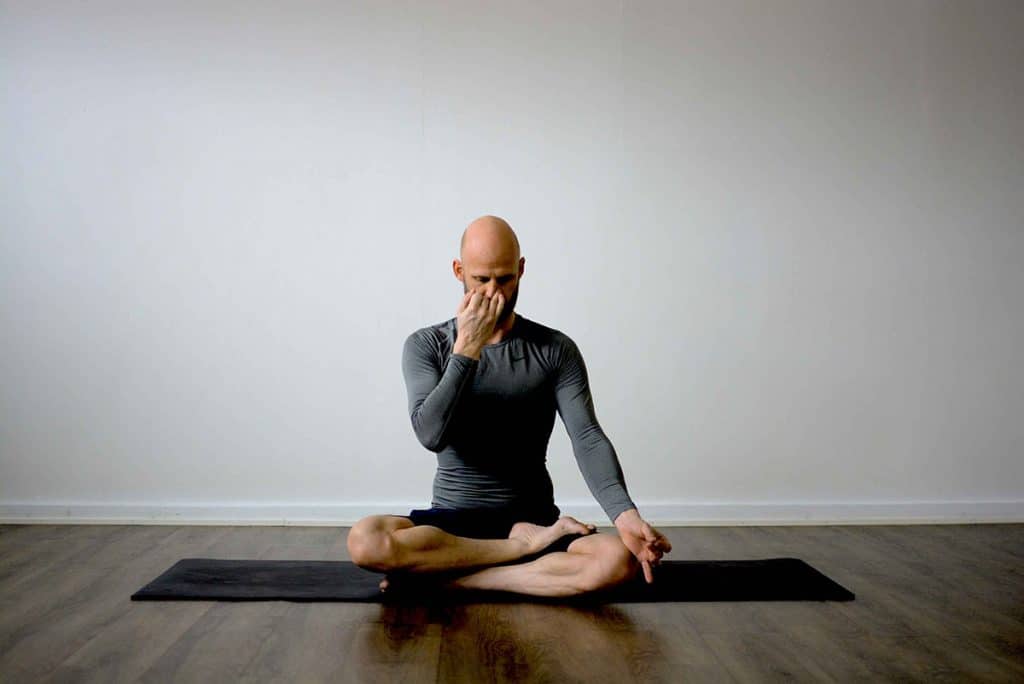

Viparita Karani
As this is a remedial pose, it circulates blood to every part of the body. Hence, it can alleviate any illness including tinnitus from the body. This pose is also known as Legs Up in The Wall pose. This posture is a great stress reliever and gives a good stretch that can calm the mind.
Steps to perform Viparita Karani:
- Sit opposite to a wall.
- Raise your legs gently against the wall.
- Keep your arms stretched with palms upwards.
- Close your eyes and breathe.
- Come back to the normal position after a couple of minutes.


Adho Mukha Svanasana
This is an anti-gravity pose that sends blood to the head including ears, nose and throat. The blood flow helps to remove the toxins and makes you feel more relaxed. One of the major reasons for tinnitus is stress. This pose works by strengthening the spine and relieving the stress.
Steps to perform Adho Mukha Svanasana:
- Stand on your four limbs in a table structure
- Exhale and extend your hands, knees and hip in an inverted ‘V’.
- With the support of your hands, straighten your neck.
- Touch your ears with your inner arms and look at your navel.
- Hold this pose for a few seconds and then return to the table position.


Bhujangasana
At times, due to intoxication in the throat or chest, it can make someone difficult to breathe. This can cause a wheezing sound (tinnitus) inside the ears. This pose removes toxins or excessive energy from these areas thereby, benefitting the ears. Anyone trying this yoga pose will be able to hear better as well as concentrate more.
Steps to perform Bhujangasana:
- First, lie flat on your stomach and palms on the ground.
- Lift your chest gently and put your weight on the elbows.
- Raise your face such as a cobra.
- Hold the pose while you inhale and exhale.
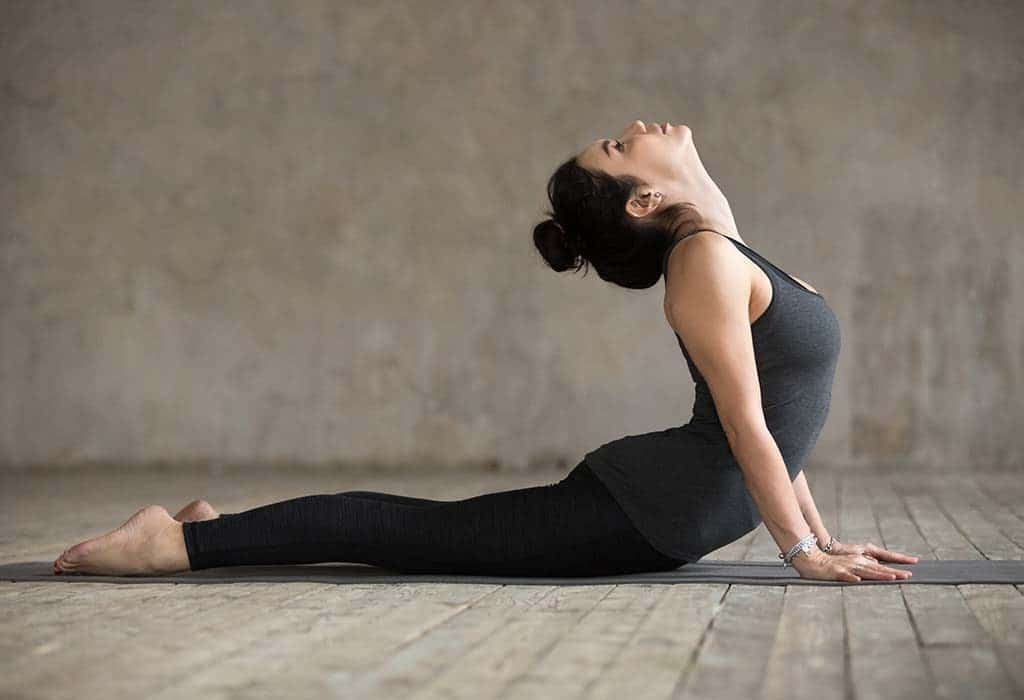

Matsyasana
With old age, the blood supply reduces to the head and parts of the ear. Hence, yoga poses that can improve the blood supply by treating the stiffness in the neck region will eventually improve hearing.
Although there are other yoga poses such as Sirshasana or Sarvangasana, Matsyasana is comparatively easier to perform. Matsyasana stretches the throat and the upper neck as well as strengthens upper back and neck muscles.
Steps to perform Matsyasana:
- Lie on the back with hands on the side
- Put your palms under the hip for support
- Inhale deeply while slowly raising the head and chest
- With the same position, lower your head back to touch the ground
- Lift the chest up with the help of elbows while breathing in and out
- Relax slowly by coming back to the normal position
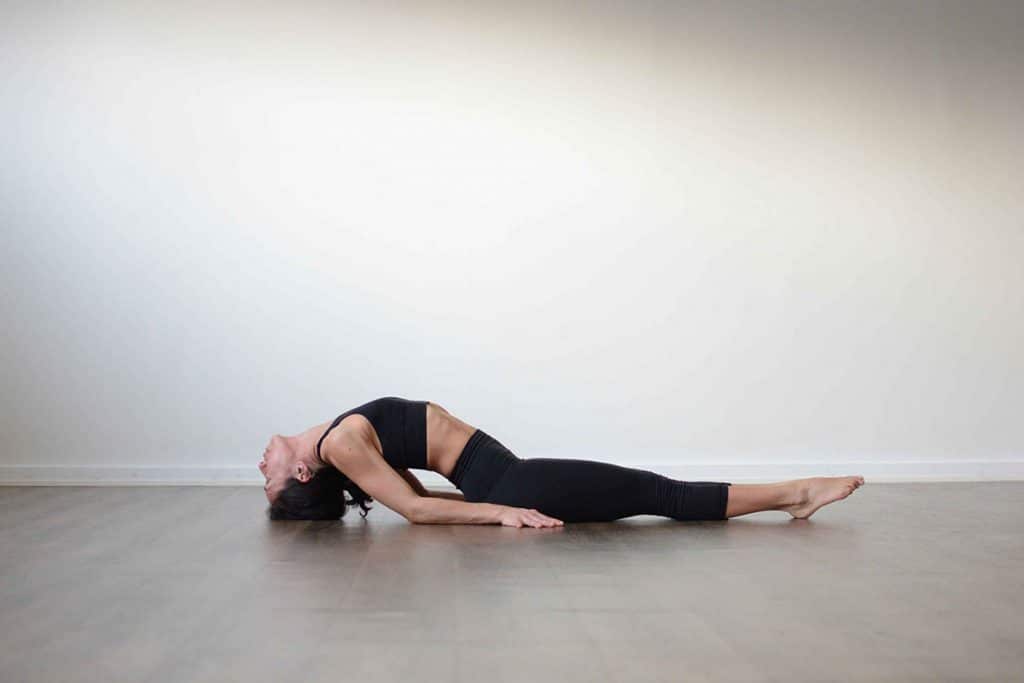
Ways to Practice Yoga
- Attend a class with a friend
- Watch along with a virtual class online and follow along
- Download a yoga app
Consider a hearing screening at any one of our local clinics.
The only way to know is to go in for a periodic check-up. Our audiologists can screen you, a loved one, or your child’s hearing.
Unfortunately, for some individuals their hearing loss may be so profound and severe that yoga and other exercises may not have such an impact; so check with your physician, audiologist, or ENT first.

